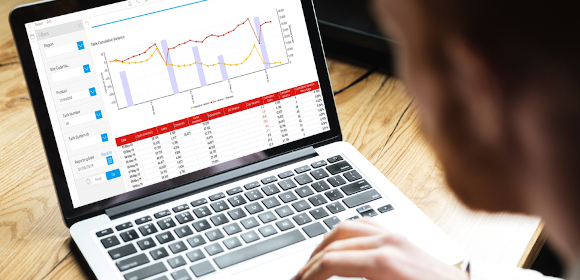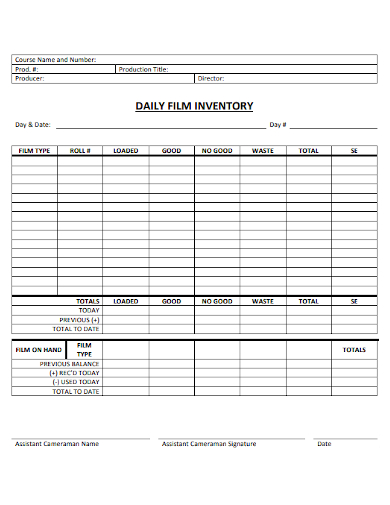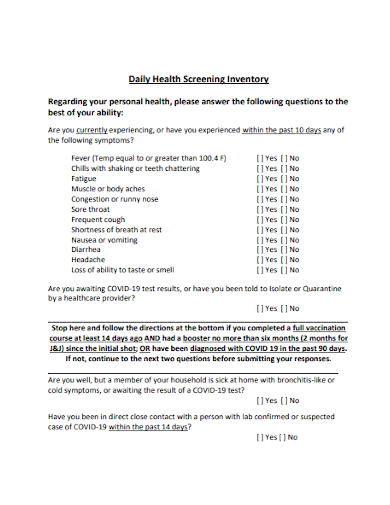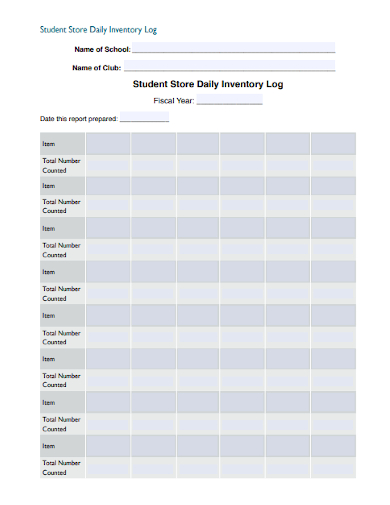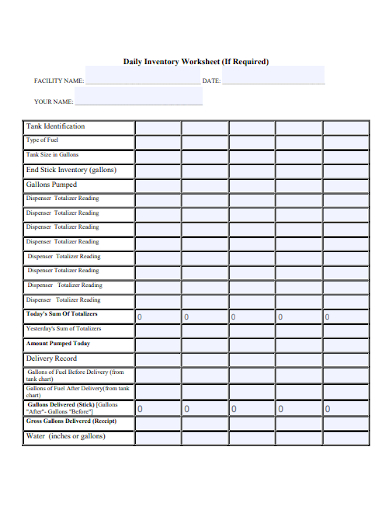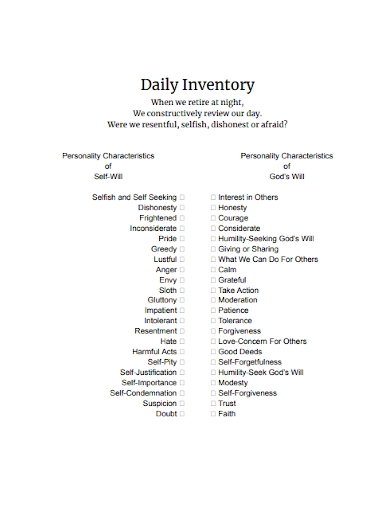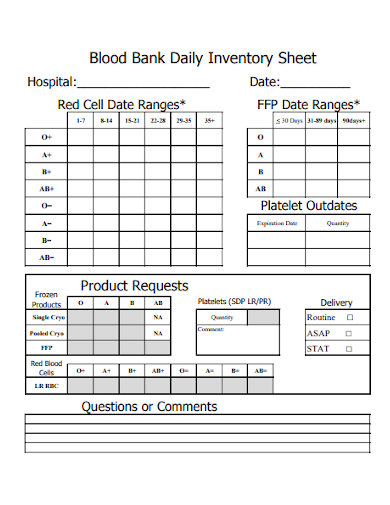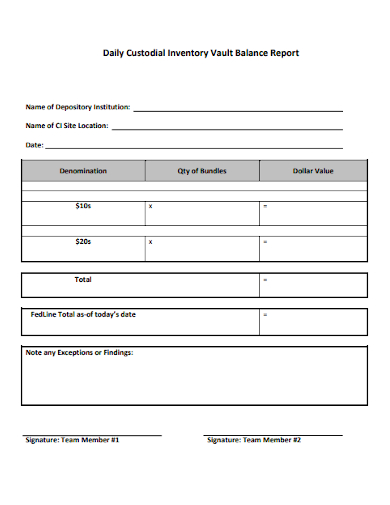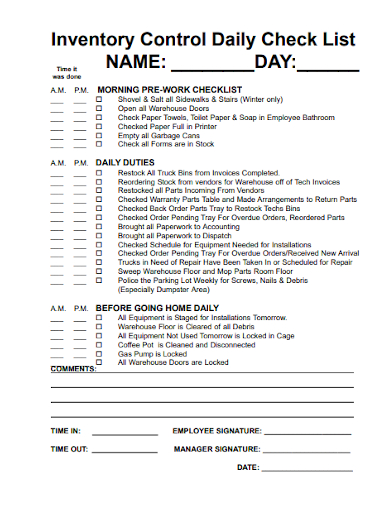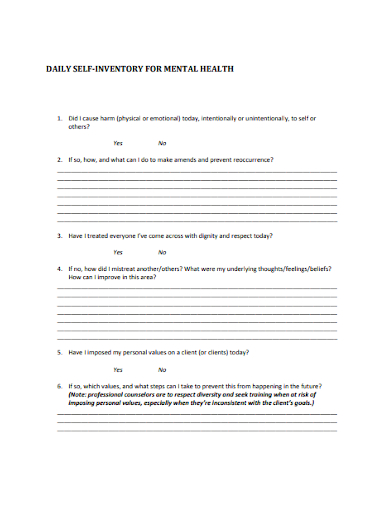10+ Daily Inventory Samples
What are the best ways for businesses to maintain track of their assets? This can be accomplished in a variety of ways, including through the use of a daily inventory. This guarantees that the company’s day-to-day operations run smoothly. You need some help with this? We’ve got you covered! In this article, we provide you with free and ready-made templates of Daily Inventories in PDF and DOC formats that you could use for your benefit. Keep on reading to find out more!
1. Daily Inventory Template
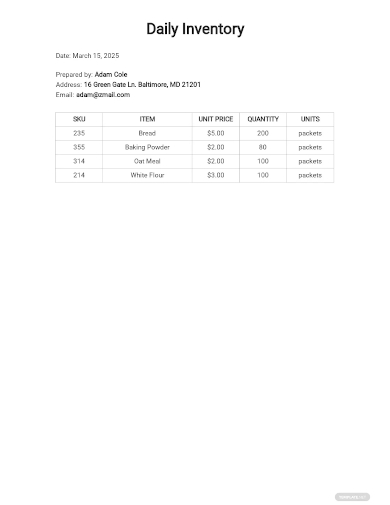
2. Daily Film Inventory
3. Daily Health Screening Inventory
4. Student Store Daily Inventory Log
5. Daily Inventory Worksheet
6. Sample Daily Inventory
7. Daily Inventory Tracking Log
8. Blood Bank Daily Inventory Sheet
9. Daily Custodial Inventory Vault Balance Report
10. Inventory Control Daily Check List
11. Daily Self Inventory for Mental Health
What Is a Daily Inventory?
The practice of counting a company’s inventory on a daily basis is known as daily inventory. Taking inventory is necessary to verify that a company’s inventory records match the physical count, to assist with materials management, and to show an accurate ending inventory balance on its balance sheet.
How to Make a Daily Inventory
A daily inventory can be used for a lot of things. It can be used for businesses or even personal use. A Daily Inventory Template can help provide you with the framework you need to ensure that you have a well-prepared and robust inventory for business on hand. To do so, you can choose one of our excellent templates listed above. If you want to write it yourself, follow these steps below to guide you:
1. Make a description column in your spreadsheet.
In another column, provide a description of the objects. If you have a variety of colors, sizes, and other characteristics, you may add further context or description here to confirm what makes it a distinct product for inventory reporting and monitoring.
2. Give each item a price.
List the price of each item so that you can quickly calculate the overall worth of your inventory as well as the value of each individual item based on price and quantity. You may need to track the buy or production costs separately from the selling price, depending on your firm.
3. Choose a time frame.
The frequency with which you update your inventory report will be determined by your requirements. Because your data might vary quickly, the bigger your sales volume, the more frequently you’ll update it. You can get away with less frequent updates if you have a buffer of inventory between your reorder point and zero.
4. Maintain a consistent approach to receiving supplies.
It may seem obvious to ensure that incoming inventory is handled, but do you have a standard procedure that everyone follows, or does each person who receives and processes new stock do it in their own unique way? Ensure that all employees who receive goods do so in the same manner, and that all boxes are confirmed, received and unpacked together, tallied precisely, and checked for correctness.
FAQ
What is the aim of inventory management?
The fundamental purpose of an inventory system is to keep accurate records of the company’s assets.
How do you deal with day-to-day inventory?
Add the opening and closing inventories together, then divide by two to get the average inventory. The daily inventory utilization is the end outcome.
What kind of items should be included in an inventory?
Raw materials, component components, work in progress, finished items, packing, and packaging are all included in inventories.
Taking a fast daily inventory of high-cost products and comparing it to your daily sales is essential. This way, you’ll know if someone is stealing from you before it’s too late. To help you get started, download our easily customizable and comprehensive templates of Daily Inventory today!
Related Posts
Sample Meeting Minutes Templates
Presentation Speech Samples & Templates
Ukulele Chord Chart Samples & Templates
Retirement Speech Samples & Templates
Weekly Schedule Samples & Templates
Contractual Agreement Samples & Templates
FREE 9+ Amazing Sample Church Bulletin Templates in PSD | PDF
Sample Business Card Templates
Sample Cashier Job Descriptions
Questionnaire Samples
FREE 10+ Sample HR Resource Templates in PDF
FREE 10+ HR Consulting Business Plan Samples in MS Word | Google Docs | Pages | PDF
FREE 49+ Sample Job Descriptions in PDF | MS Word
FREE 13+ Academic Calendar Templates in Google Docs | MS Word | Pages | PDF
FREE 10+ How to Create an Executive Summary Samples in Google Docs | MS Word | Pages | PDF
